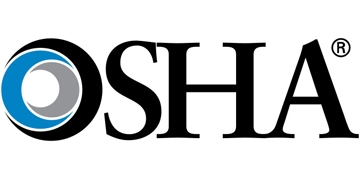Below are Federal OSHA Standards that dictate the use and function of fall protection and other related equipment. Your state may have its own governing body for workplace safety with standards that are equal to, or possibly supersede the Federal Governments requirements.
OSHA Construction Standards (1926)
OSHA 1926.104 Safety Belts, Lifelines and Lanyards
OSHA 1926.105 Safety Nets
OSHA 1926.453 Aerial Lifts
OSHA 1926 Subpart M – Fall Protection
- OSHA 1926.500 Scope, Application and Definitions
- OSHA 1926.501 Duty to Have Fall Protection
- OSHA 1926.502 Fall Protection Systems Criteria and Practices
OSHA 1926.760 Steel Erection Fall Protection
OSHA 1926.954 Electrical Worker Fall Protection
OSHA 1926 Subpart X – Stairways and Ladders
OSHA 1926.1423 Crane and Derrick Fall Protection
Letter of Interpretation – Warning Lines 1/3/2005
NEW 1/17/2017 OSHA General Industry Standards (1910)
OSHA 1910 Subpart D – Walking / Working Surfaces
- OSHA 1910.23 Guarding of Floor and Wall Openings and Holes.
- OSHA 1910.26 Portable Metal Ladders
- OSHA 1910.27 Fixed Ladders
- OSHA 1910.28 Safety Requirements for Scaffolding
OSHA 1910.66 Powered Platforms
OSHA 1910.146 Permit Required Confined Spaces
OSHA 1910.268 Telecommunications Fall Protection
OSHA 1910.269 Electrical Worker Fall Protection
OSHA 1910.272 Grain Handling Fall Protection
OSHA 1910 Subpart I – Personal Protective Equipment
- OSHA 1910.140 Personal Fall Protection Systems
ANSI Consensus Standards
The ANSI Standard is a consensus standard created by experts in the fall protection field. Although this is not law, OSHA frequently references consensus standards when investigating accidents and overall workplace safety.
ANSI/ASSE A10.32 Fall Protection Systems – American National Standard for Construction and Demolition Operations
ANSI/ASSE Z359.1 Safety Requirements for Personal Fall Arrest Systems, Subsystems and Components



